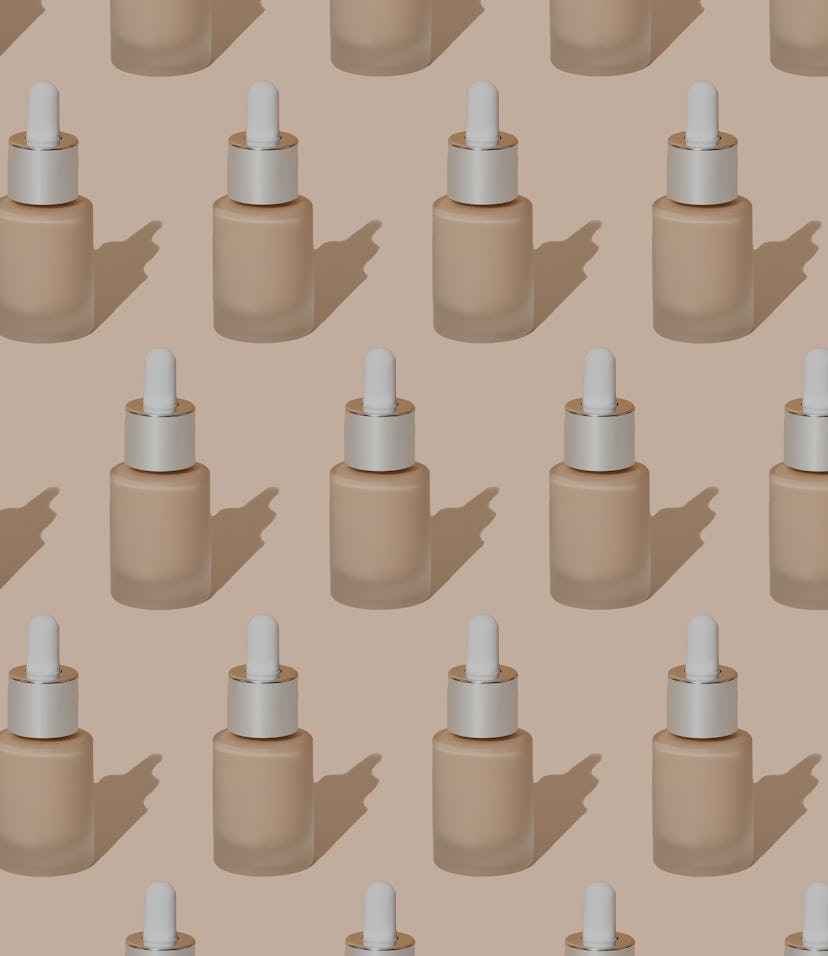Beauty Blunders
This data makes the racial biases of the cosmetics industry hard to ignore

80%
Light to medium shades account for this much of the products labeled only "nude."
A report published by The Pudding dives into the taxonomy of foundation names in the beauty industry. The report highlights the not-so-subtle biases at play when it comes to naming and numbering the different shades, especially when it comes to darker skin tones. Between January 11 and 18, The Pudding studied a total of 6,816 swatches from 107 brands through a range of 328 products.
Be it food and drink labels like “mocha” or “coffee” for deeper shades of complexion or sequencing darker hues to the further end of the chart as you’ve probably already noticed in stores, these details give us a look into the lack of creativity in the world of cosmetics and the existing room for improvement. Get ready for some data and shade.
Here are the findings — The report found that 130 products within the Ulta and Sephora lines relied on sequential numbering for their foundations. Sequential categorization refers to how cosmetic stores will label different foundation colors with numbers from 1 and upward. The Pudding found 97 percent of those products placed lighter skin tones upfront in the numbers, meaning that they were first to appear when customers looked for a bottle of product. Companies to do this with light skin first included bareMinerals, Urban Decay, Maybelline, and even Fenty Beauty.
Only four out of 130 of those products categorized dark shades up front, and the companies to do so were Pacifica, Juvia's Place, Eva, and Beauty Bakerie. It could be that the numbering of these products is entirely random but some critics worry that placing deeper shades at the end of charts signals that they are somehow inferior to the lighter colors on shelves.
The problem with ‘nude’ — A total of 110 shades in the batch carried the term "nude" to refer to natural-looking hues that are supposed to match the tone of your skin, The Pudding reports. But a pattern begins to emerge when you look at the interactive data in the report: for most shades, "nude" only applied to shades in the light to medium part of the color spectrum. When a darker nude appeared, it carried a drink or food label next to it, such as "nude mocha."
Of course, there are cases where lighter tones will also come with modifiers like "nude vanilla" or "nude bisque" but the report shows that these cases are infrequent. In total, the report found that 278 foundation shades came with drink names in the title for deeper skin colors, including the overused "mocha," "latte," and "espresso" for darker tones. More broadly, 1,024 shades came with food names, including "peanut butter cup" for medium tones and "chocolate truffle" for deeper hues.
It’s more than possible that the creators of these titles and numbering — no matter how contrived “coffee” labeled products are — do so without malice or deliberate intent to hurt consumers and overlook their needs. But, as The Pudding warns, the white-centric approach of the cosmetic industry creates little space for people of color and further stigmatizes darker skin. If beauty gurus and companies are as welcoming as they excitedly claim in the YouTube promotional videos for their millionth product for the millionth time, perhaps starting with a dab of introspection and cleaning up the blemish of covert bias in their lineups would be a good way to help open up the field for everyone.